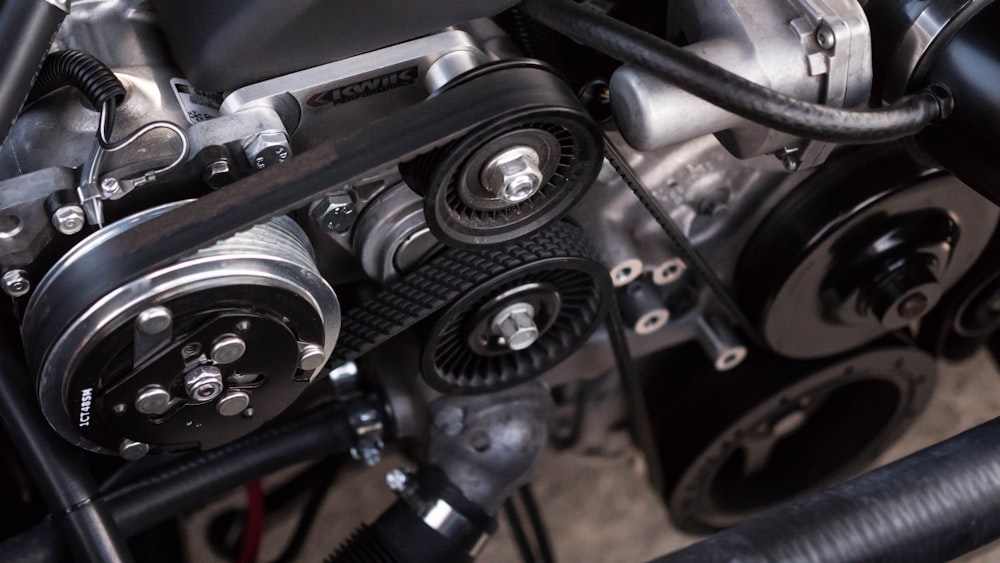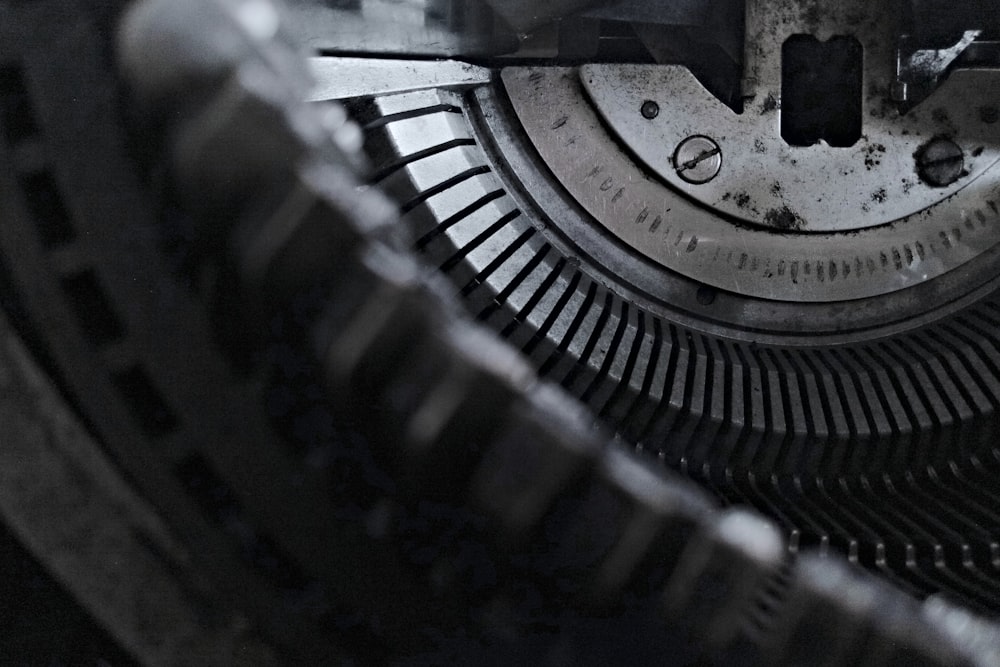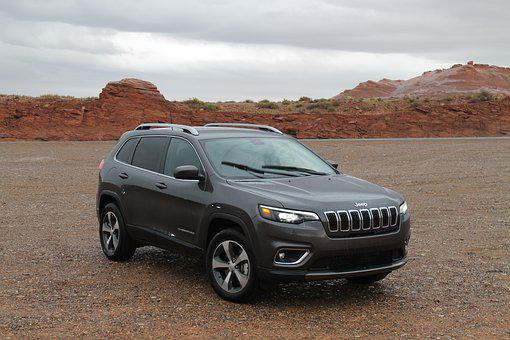Serpentine Belt vs Timing Belt – What’s The Difference?
It is important to understand the differences between the serpentine belt vs timing belt if you want to grasp how an internal-combustion engine functions.
Although they are utilized for different reasons, both belts are essential in keeping the engine operational.
The serpentine belt is so named for the many turns it takes along its route, and it is also referred to as the drive belt.
It drives the auxiliary systems and may be seen along the front of the engine.
The timing belt keeps the crankshaft and camshaft in sync.
It can be found on either end of the engine and is protected by a cover.
Serpentine Belt
The serpentine belt is used to drive the alternator, air conditioning, power steering pump, supercharger, and in some cases, the water pump.
Originally, serpentine belts were known as drive belts and had a far less complicated form.
They simply needed to move power by the alternator, water pump from the crankshaft, and radiator fan.
Cars could have one or two drive belts depending on the design.
The modern serpentine belt is made to cover the greatest surface possible while taking up the least amount of space in the engine.
A single belt necessitates only one crankshaft pulley, reducing overall engine length.
The radiator fan may be powered by the belt, but because technology has advanced, electric motors are now used instead, therefore separating the engine from the radiator.

The serpentine belt transmits power from the crankshaft pulley to the accessories.
It is always at the bottom of the engine and houses the oil sump.
The auxiliary systems are positioned where they take up the least amount of space, and the serpentine belt must adapt.
For example, by using idle pulleys to alter the approach angles, there is more contact between the belt and the auxiliary system.
There is a difference between the two sides of the serpentine belt.
The interior side includes grooves that run along the length of the belt and provide improved traction when it comes into touch with grooved auxiliary system pulleys like AC, alternator, and power steering.
In certain cars, the water pump is driven by the smooth side of the belt, as are some of the idling pulleys.
The belt is cylindrical and non-directional.
However, in order for the machine to operate effectively, it is important to match the belt side with the pulleys.
The rubber will stretch over time, necessitating that the belt is under constant tension.
That is when the belt tensioner comes in handy: a spring-loaded pulley that tightens the belt as soon as necessary.
Timing Belt
The timing belt serves one major function: to synchronize (time) the crankshaft’s rotation with the camshaft.
The timing belt, crankshaft pulley, camshaft pulley, and belt tensioners make up the system.
It also drives the water pump in some scenarios.
The timing chain is a substitute for the timing belt, but it also has the same purpose.
We’ll go through the distinctions between both in another section.
To really grasp what’s going on, we need to discuss some of the fundamentals of internal combustion engine technology.
At the bottom of an internal combustion engine, the crankshaft is connected to the piston via the connecting rod.
The cranking mechanism transforms the linear force applied by the piston into a rotational force.
The serpentine belt, timing belt, and transmission transfer power to drive the car.
The air-fuel mixture is compressed and detonated by the pistons, both in diesel (pure compression) and with the help of a spark plug (petrol).
To make sure this happens, the intake and exhaust valves must open at precisely the right moment.

The camshaft is what makes the timing mechanism work.
The crankshaft, which is on the front or rear side of the engine block, connects to the camshaft and synchronizes its rotation.
A rod with a row of egg-shaped cams on it, the camshaft resembles an egg nest.
One valve is opened and then closed by each of the cams. OHC and DOHC are two names for engines with one or two camshafts, which are generally known as overhead cam (OHC) and dual overhead cam (DOHC).
You may be wondering why we say “crank the engine.”
In the early days of automobile development, a starting handle had to be inserted from the front and cranked in order for it to start.
Stators were invented to automate the procedure, with the electrical current taking the place of physical labor instead.
The first cycle of the crankshaft and therefore pistons and camshafts must be done manually until the detonations are strong enough to power the pistons.
Maintenance Cycle And Change Cost
The reason some folks are perplexed about the distinctions between a serpentine and a timing belt is that they are both maintenance procedures.
The changing of the serpentine belt and timing belt is usually done at the same time.
I was taught that the belts should be changed every 35,000 to 50,000 miles, but modern belts can endure up to 100,000 miles, so it’s better to follow the manufacturer’s recommended maintenance plan.

The water pump is usually changed at the same time because it has a similar lifespan and saves money on labor expenses if replaced separately.
I should clarify the overall cost of replacing the belts while we’re talking about expenses.
Serpentine Belt Replacement Cost
A serpentine belt costs between $15 and $70, but replacing the idle pulleys and tensioner at the same time is a good idea – they’re both around $25 each.
A complete kit may be purchased for less than $100.
The cost of labor ranges from $70 to $150, resulting in a total of $200, although this work can also be done at home with some skill and the necessary tools.
Timing Belt Replacement Cost
The timing belt is not overly expensive, running between $50 and $100.
The issue is the labor cost; replacing the timing belt necessitates opening up the engine.
It is generally accompanied by an oil and filter replacement, as well as other maintenance, which can all be lumped together to reduce the overall cost.
Depending on where the engine is positioned and whether the belt is facing away from the engine, labor will cost between $500 and $1,000.
Timing Chain
Although we are speaking about belts, the timing chain is a popular alternative to the timing belt, therefore it must be mentioned.
The substantial difference between the belt and the chain is that metal is used in the chain and it lasts longer.
The rule of thumb goes that the timing chain lasts twice longer than the timing belt.
This isn’t entirely accurate, especially because timing belts can now last 100,000 miles, but the chain is still a more durable alternative.
The timing chain set costs between $200 and $400, which is more expensive than the timing belt but identical in terms of labor costs, ranging from $400 to $1000 depending on the location.
To gain access, if the chain is located at the rear as it was notoriously done on early 2000s BMWs, the entire engine must be removed.
What Are The Symptoms Of The Bad Timing Belt?
Before we look at the indicators, I would like to make one thing clear.
If you start seeing indications of timing belt wear, you should act right away and have it changed.
Timing belts are replaced at predetermined intervals regardless of condition to assure that it does not break, as the snapping of a timing belt may bend valves or cause catastrophic engine damage.
The following are some of the most frequent indications of a timing belt failing:
- Ticking, rolling noise.
- Engine error code.
- Hard start and misfires.
- Rough idle.
- Loss of power.
If your car’s timing belt is failing, you may see a rattling or grinding noise from the engine.
It’s probable that a timing belt failure is to blame if you hear a rumbling or grinding sound coming from the engine and it isn’t coming from the serpentine belt.
The computer could indicate an engine crankshaft/camshaft fault, causing rough starts and misfires as the belt slips.
My suggestion is to avoid depending on these indications as early warning signals of timing belt failure because they frequently occur without notice.
The only certain ways to stay ahead of significant engine issues are to maintain a maintenance book and schedule.
I had a 1998 VW Passat with approaching timing belt replacement that ran perfectly otherwise.
Instead of changing the belt, I opted to sell the automobile with an indication that the belt needed to be replaced.
The next owner did not listen to me, and the timing belt broke just over 6 months later.
Fortunately, the engine was safe despite the fact that it was a very rare occurrence.
What Are The Symptoms Of The Bad Serpentine Belt?
In terms of maintenance, the serpentine belt is preferable to the timing belt.
It is simple to check and will indicate signs of wear so you’ll know when it is time to replace it.
The cost of a new belt and labor is usually $250, which isn’t terrible considering how crucial it is.
These are some typical indications that your serpentine belt needs to be replaced:
- Persistent squealing sounds
- The air conditioning does not work
- Belt feels loose
- Loss of power steering
- Rolling noise
- Dying battery
- Various check engine lights
- Engine overheating
When the serpentine belt fails, it puts pressure on other components of the car’s electrical system.
Because it powers the additional systems, you will notice a variety of issues as a result of the belt slipping.
The roller may contact the belt and cause power steering and AC loss as a result of the belt slipping.
The squealing sound is not always a cause for concern, as it indicates the belt has compressed in cold weather.
If the noise persists, the belt should be replaced.
The same may be said if you hear rolling or if the belt becomes loose as a result of a failed tensioner.
When one of the components fails, you must replace the entire set.
The check engine light will alert you to the location of the problem.
The alternator needs a serpentine belt for power, and if it isn’t maintained, the battery can run down.
Because insufficient coolant pressure might cause the engine to overheat, the water pump is one of the most serious issues.
How To Replace The Serpentine Belt
We can not change the timing belt since it is a job for specialists, but replacing the serpentine belt is another story.
The procedure of removing the belt is simple, but accessing it will be a major challenge.
If your car’s engine bay is too cramped, you might want to hire a professional and save yourself a day’s worth of trouble.
The make, model, model year, engine displacement, and power are all crucial information to know while choosing the correct serpentine belt kit.
Alternatively, you may look for the right part using the VIN number.
A standard socket set will suffice for this job, but a specialized serpentine belt toolkit can also make it easier.
Steps To Replace The Serpentine Belt:
- Locate the belt diagram printed on the engine bay or in the repair handbook.
- Disconnect the negative battery cable.
- Remove any obstacles that are in your way, such as the air intake.
- Remove the belt tensioner. Insert the ratchet head into the belt tensioner and apply a clockwise force to release tension.
- Use the ratchet to remove the belt while holding it with the other hand.
- Remove the bolts that secure the tensioner with a ratchet and a socket.
- Install the new tensioner in the same location.
- The idle pulley is secured with a single bolt. Remove the old pulley and replace it with the new one.
- Remove the new belt and follow the diagram instructions precisely to replace it.
- Begin by inspecting the crankshaft, then work your way around the system towards the tensioner.
- Once the tensioner has been released, push the belt onto the idler pulley once again.
- Check that everything is secure, tight, and in its proper location.
- Connect the battery and any components you had to remove in order to get to the belt.
Frequently Asked Questions
Are the serpentine and drive belts one and the same?
Yes, the serpentine belt is a form of the drive belt, and almost all cars employ it.
Old vehicles, on the other hand, did not have serpentine belts with multiple pulleys and used simple 2 or 3-point drive belts.
Are the timing chain and drive belt the same?
It is not, and you are most likely thinking about the drive belt, which serves the same purpose as a timing chain but is composed of different materials.
Is it better to use a timing chain or a timing belt?
Both systems have advantages and drawbacks.
A timing belt is less expensive to replace, but it necessitates a specific service schedule that may cause you to go through many belts if you keep your automobile for a long time.
The timing chain, on the other hand, is more expensive but lasts 50% – 100% longer than a timing belt.
Some drivers do not replace the chain at all, which is inappropriate, yet it may make more sense from a financial standpoint on occasion.
Is it better to use timing gears or timing chains?
The timing gear is the longest of all synchronizing systems, but it is noisy and needs a lot of lubrication to function properly.
Almost every modern automobile now has a timing chain or belt instead of a chain or belt.
What if your drive belt breaks while you’re driving?
As the belt synchronizes and powers the camshaft through the crankshaft, when it snaps, the camshaft will come to a halt while the crankshaft and pistons continue to rotate.
The valves will be struck by pistons, bending or breaking them as a consequence.
How long does it take to change a drive belt?
The belt alone takes around 30 minutes to replace, but if you include the tensioner and idler pulley, the job will take about an hour.
The majority of the labor is focused on gaining access to the belt rather than working on it since changing a belt takes 5-10 minutes.
What cars do not have timing belts?
Instead of timing belts, some BMW, Mercedes, Cadillac, and a few other companies prefer to employ timing chains.
If you’re not sure if a vehicle has a timing belt or chain, a quick Google search will tell you whether it’s a chain or belt.
Check the service book before determining if there is or isn’t an engine knock on an already-present automobile.
What is the difference between the serpentine belt and the alternator belt?
The alternator pulley is covered by the serpentine belt covers, vehicles with a serpentine belt do not need an alternator belt.
Alternator belts are used in older cars with dedicated drive belts, so you have undoubtedly heard of an A/C belt, fan belt, and alternator belt.
When the serpentine belt breaks, what happens to a vehicle?
When the belt breaks, there is a tiny chance that it wraps around one of the rotating pulleys and damages the component, but it is not very likely.
You’ll lose power steering as soon as the belt snaps since there is nothing driving the pump.
If the A/C is not working, the dashboard illuminates all of the warning indicators.
Because the alternator is not turning, the battery will not charge, but the main thing is, that the water pump will pause coolant circulation throughout the system, which can result in overheating quickly.
If your serpentine belt fails, stop your vehicle as soon as possible and attempt an on-site repair.
If nothing is damaged, all you need is a ratchet to release the tension on the belt tensioner and replace the belt.
What is the source of serpentine belt noise?
When the serpentine belt makes noise, it is a sign that it should be replaced.
The belt tensioner failure, worn-out pulley, or cracks in the belt itself might all produce noise.
Greasing the belt temporarily will silence the noise, but it will not address the underlying problem.
Is it possible for a serpentine belt to endure 200,000 miles?
No, it is not reasonable to expect a rubber belt to endure all that usage and season changes over the years.
The maximum service life of a serpentine belt is one-third of that number, and you might still have belt slipping, irregular functioning of the auxiliary systems, and noise from the belt.
Is it possible to start a car without using a serpentine belt?
You only need the battery, starter, gasoline, and engine to start the car, so there is no need for a serpentine belt.
However, at the absolute least, you’ll want the belt to operate the water pump and cool the engine as well as to power the alternator and recharge the battery.
You should not start the engine without the serpentine belt if you just need to do so to make repairs or check how it runs.
Are drive belts universal?
Because the drive belts (serpentine belts) are vehicle-specific, they are not very useful.
The belt’s length, width, and turns were meticulously planned so that it would not fit your car.
What causes my automobile’s belt to squeal?
The squealing noise that may be heard on less-than-new belts during the winter is caused by the serpentine belt.
A few seconds of squealing is not a cause for worry, but if it is continuous, you might need to change your belt and inspect the pulleys.
How do I check my timing belt for wear?
A professional mechanic should be hired to replace, clean, or check the condition of the timing belt.
The goal is to examine the grooves and sprockets for any signs of wear and tear.
Summary
The differences between the timing belt and the serpentine belt are significant enough to remember.
The replacement intervals are comparable, so you may replace them at the same time, but you should always maintain the timing belt period, whereas the serpentine belt can be changed as needed.

